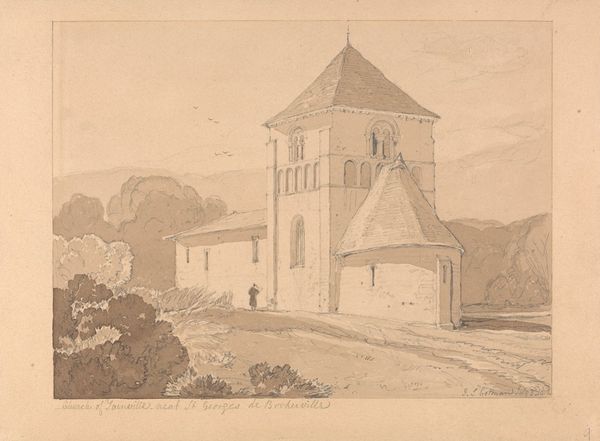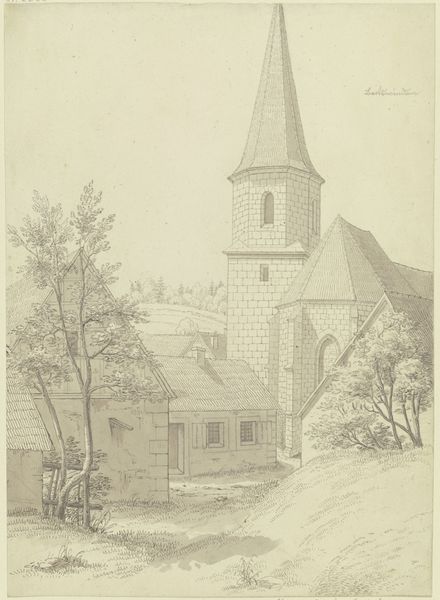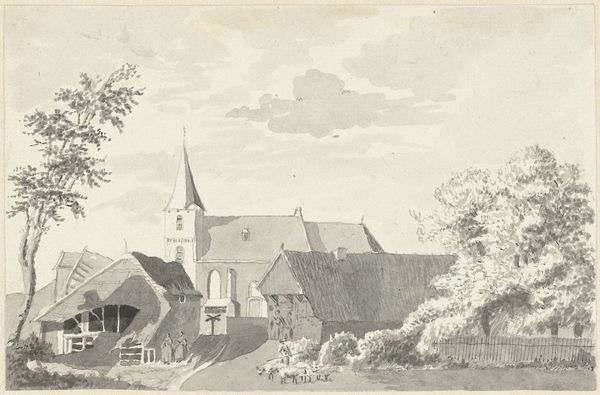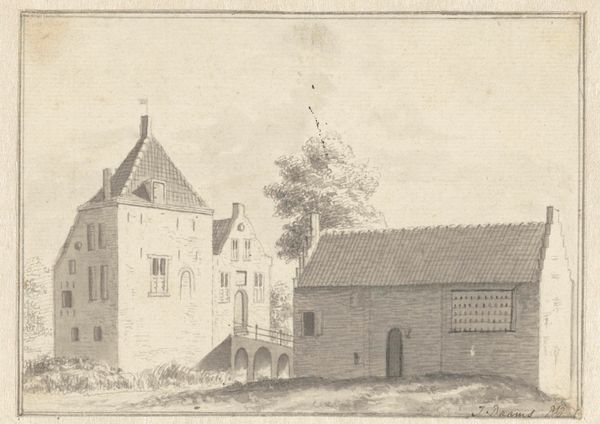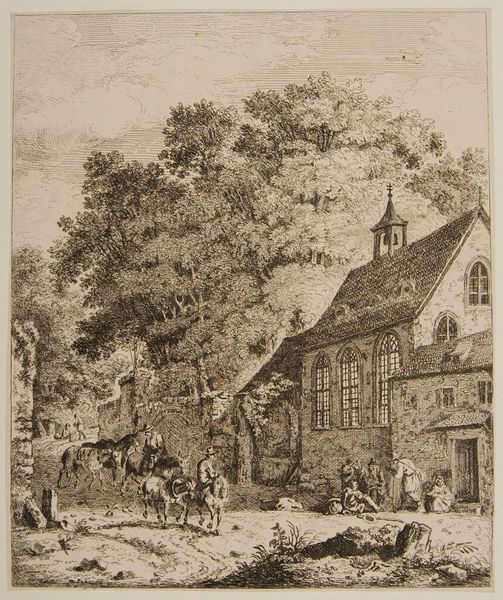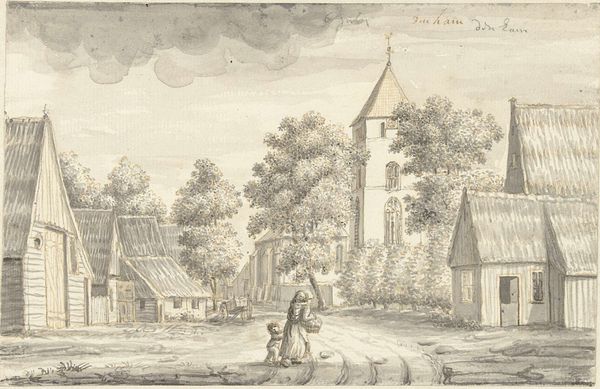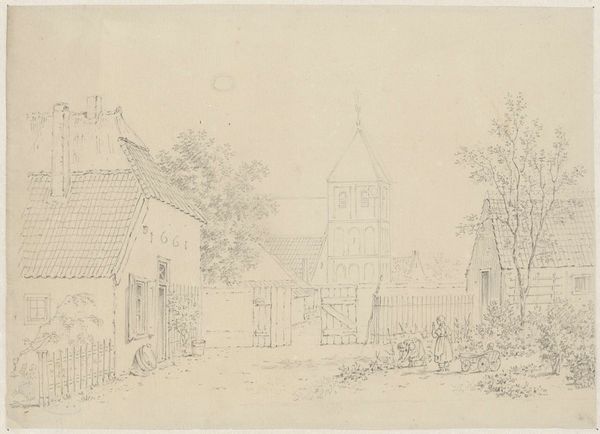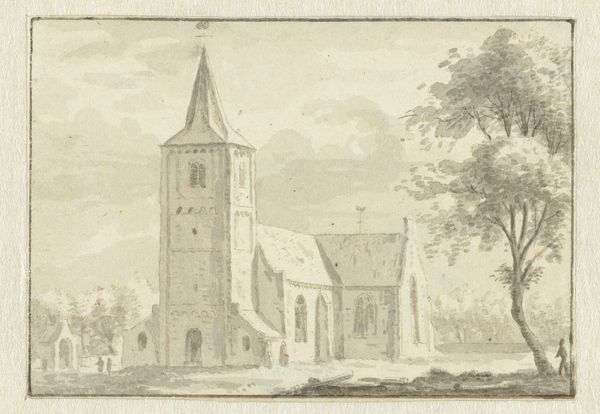
Dimensions: height 252 mm, width 170 mm
Copyright: Rijks Museum: Open Domain
Curator: What a tranquil scene. The draughtsmanship of Noach van der Meer II’s work, “Twee rustende figuren bij de ruïne van een kerk,” dating back to 1785, presents such evocative line work. What strikes you first about it? Editor: It feels melancholy, almost a memento mori. The ruined church is juxtaposed with resting figures, sheep, and even a stork’s nest atop the remaining structure. It’s an interesting combination of decay and enduring life, all rendered in subtle ink washes on paper. Curator: Precisely. The ruin serves as a powerful structural element, leading the eye upwards and across the composition. Note how the artist uses hatching and cross-hatching to build depth and texture, creating visual interest even in the monochrome palette. It is a beautiful use of light and shadow, to model volume without a reliance on chromatic variance. Editor: Indeed. The stork’s nest is such a resonant symbol – renewal amidst destruction. In a broader cultural context, storks often symbolize birth and good fortune; here, perched atop the decaying church, it feels like a commentary on the cyclical nature of life and the enduring power of hope. The sheep resting nearby may also evoke notions of pastoral peace, contrasting sharply with the evidence of historical decline. Curator: Observe how van der Meer frames the entire scene with delicate foliage. The organic forms of the trees soften the harsh lines of the ruined architecture. The artist cleverly juxtaposes geometric forms of the church against natural elements like tree and rolling landscape to guide and balance your viewing. It’s about balancing the architectural line and a nature always eager to overwhelm those constructs. Editor: Yes, the foliage almost embraces the ruins, softening the harsh reality of the crumbling structure and imbuing a sense of nature's enduring presence. The two figures at the base also introduce an important narrative element. Are they weary travelers, or locals pausing to reflect on the past? Curator: What makes the scene captivating is the quiet stillness of it all. It is the quality that romanticism evokes best. We consider not only the formal elements of landscape and figure, but also how van der Meer infuses the artwork with an emotionally moving moment for us to linger in as observers. Editor: In closing, it’s fascinating how a relatively simple ink drawing on paper can evoke such complex feelings and ideas about time, loss, and the resilience of life and nature. Curator: Van der Meer encourages close looking – rewarding viewers who carefully consider how even the humblest materials yield tremendous insight and artistic intent.
Comments
No comments
Be the first to comment and join the conversation on the ultimate creative platform.
